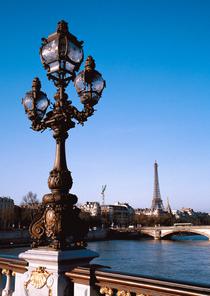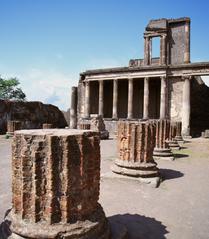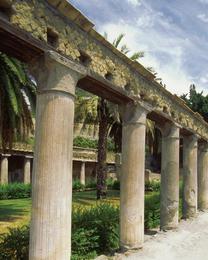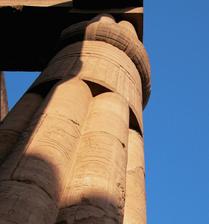Women's Travel Abroad
For Women About Women By Women
Travel
You Are Welcome to Contact Me Personally With Comments or Questions
Copyright 2017 Creative Travel Publications, LLC
Angels of Paris
An Architectural Tour Through the History of Paris
Rosemary Flannery
The Little Bookroom, New York, 2012. ISBN: 9781936941018
A lovely little book, compact enough to pack in your suitcase, with informative 2 to 3 page summaries of the architectural significance of angels that grace the buildings and monuments of Paris. The book is first sequentially by arrondissement and then by date of construction. Addresses and transportation information will help you find the exact location of the angels. Of course, the beautiful color photographs make it easy to spot them. There are angels of every gender and age to be found throughout the city.
All of the angels decorate the exteriors of buildings so you will have easy access to them for viewing and photographing. Of course, there are many angels on the inside of other buildings. This book inspires the reader to search them out. In looking through my photographs from years gone by I find them on lintels, pillars, and baptismals. Each is different and charming.
Many of the angels in Flannery's book are new to me. I have not seen the angels at the Louvre, Church of Saint Germain l'Auxerrois, or Cluny Museum even though I have been to these places many times myself. Next time I will take the time to search them out.
I have already picked out some new ones I want to see: the guardian angel at the Church of the Madeline, the angel of Allegorical Love at the Carnavalet Museum, and the Lighthouse Angel near the metro stop Arts and Metiers.
The angels at Notre-Dame Cathedral are always worth another look. Here you can see the oldest angels in Paris, the angels of the arches, the broken angels, and the angels of the Assumption. Nearby are the angels of the Sainte-Chapelle which magestically encircle one of the churches spires.
Currently my favorite angels are on the front doors of the church of Saint Jeanne de Montmartre at the Abbesses metro stop. The church is across the street from the carousel. According to Flannery the exterior is an architectural and artistic combination featuring a Gothic facade, neo-Byzintine beadwork, and Art Nouveau embellishments.
The main entry door arch has three lovely angel rondales. The praying girl angel, on the right side, captures the charm of childhood innocence. The mosaic designs that decorate the building are equally as lovely.
I took these photographs last year. This year, thanks to Flannery's research, I learned about the construction of the church and its importance to the resident's of the Mont. As a parish church Saint Jeanne hosts many events including the funeral which cut my photographing session short.
The author is a scholar of French language, literature, and architecture who studied at Columbia in the USA and the Sorbonne in Paris. Her writing style is both amiable and sophisticated. Her angels capture the spirit of Paris. Exploring the architecture of Paris, using this book, may give you an entirely new view of this enchanting city.
Readers Adults
Genre Non-fiction/Travel
Sites/Paris
Period Medieval to Modern
Extras Locations
Color Photos
Bibliography
Paris By Pastry
Stalking the Sweet Life on the Streets of Paris
Joyce Slayton Mitchel
Jones Books, Madison, Wisconsin, 2006. ISBN: 0976353962
To my mind this is the most delicious travel book ever written. Joyce Mitchell has spent many hours researching the best pastry shops in Paris. She has also created a sweet little masterpiece in the process.
Not only does this book provide a map for locating the sweet treats while in Paris it also gives us recipes to make them when we get back home. Whenever I get nostalgic about my favorite Parisian treats I simply open this book and I can find out how to make it.
Remember that apple-filled tart Tatin, almond macaroon cookie, or buttery madeline cake? The author has included all these and more recipes in her book. I have tried many of them and they are good.
Parisian pastries have the most charming names. Do you ever wonder what is a Puits d'Amour or Peches Roties au Caramel Noisettine? Wonder no more. Mitchell includes the history and ingredients of these pastries. Many other pastry descriptions are also featured as sidebars in her book.
The famous sites of Paris come alive as she cordially gives us interesting facts and details about their history. There are three sections about the top attractions. One section includes the popular sites of Cathedral of Notre Dame, Eiffel Tower, Louvre and d'Orsay museums, Luxembourg Garden, and Champs-Elysees. A second section focuses on other interesting sites like the Arch of Triumph, Pompideau Center, Place of the Opera and Vosges, church of Madeline, and Monceau park.
In the last section Jeanette and Georgette share their best sites. Among their favorites are the several other museums and parks plus the canal St. Martin, Pere Lachaise cemetery, national library, St. Oeun market, and tour boats on the Seine. They add two more somewhat unique places as well: the Cite University and Alliance Francaise.
Mitchel directs us to pastry shops near each of the sites for a delicious sweet treat break. She provides information about location, address, phone number, metro stop, and hours. She also includes descriptions of some of the pastries and prices in each of the shops.
Jeanette and Georgette also provide two yummy pastry tours. In one we join them in stalking the delicious pastries in and around Paris, a whirl-wind fourteen metro stop pastry extravaganza, and a visit to the shops of three of the most famous master pastry chefs of Paris.
The index is uniquely divided up by arrondisements, attractions, pastries, pastry shops, and recipes. The book is in a 5 X 7 format so it is easy to carry along with you in Paris. At home I shelve it with my recipe books.
Readers Adults
Genre Non-fiction/Travel
Paris
Period Contemporary
Extras Introduction
Preface
Recipes
Map
Index
Paris In Love
Eloisa James
Random House, New York, 2012. ISBN: 9781400069569
Taking a sabbatical year in Paris, after the loss of her mother and dealing with her own breast cancer, Eloisa James poignantly and humorously writes about her relationship with Paris and its residents. In paragraph after paragraph, some very short and others very long, Eloisa charms us with her colorful descriptions of life in the city of lights.
Traveling to Paris with her husband, son, and daughter she recounts the ups and downs of having children in foreign schools, shopping in the local markets and stores, and relearning French. There is something very real in the style of her writing. While James is never overly dramatic each little vignette gives the reader a genuine look into the author's experiences and insights.
In no time I began to think of her as a familiar even though I have never met her. She and I are on a first name basis. In a simple paragraph she tells about how as a young mother she sacrificed leisurely baths for hasty showers so she could tend her children. By the time she relocates in Paris the children are less needy and she can resume taking leisurely baths.
Eloisa writes, "These days, as soon as Anna is in bed, I seek refuge in steaming water. The pages of paperback romances, along with my fingers and toes, wrinkle the way they used to when I was fifteen; my body feels strong, buoyant, unscarred." We learn so much about her in so few words. The author tells us that she has felt over burdened for some time. We learn she is still adjusting to the disfigurement of her recent bout with breast cancer. Eloisa also tells us she believes in the power of love to heal.
Rarely does an author touch me with her story as much as Eloisa James does. Her writing is, in essence, poetic prose. I began to wonder how she had developed this unique writing technique. With a little bit of research I found out Eloisa James is actually Mary Bly.
Mary Bly is the daughter of the poet Robert Bly. It is the death of her mother Carol Bly, a well known activist writer, that partly motivates her to move to Paris. As the author Eloisa James she has written several romance novels herself and as professor Mary Bly she teaches Shakespeare at Fordham University in New York. No wonder she writes prose so poetically.
For me this book is very romantic. Eloisa writes about what it really takes to live 'happily ever after' after the loss of a loved one, an encounter with a life-threatening illness, and the awareness that life does not always go the way we plan. In sharing her journey I realized that leaving the old life behind and embracing new adventures can be transforming.
Readers Adults
Genre Non-fiction/Travel
Memoir/Paris
Period Contemporary
The Complete Pompeii
Joanne Barry
Thames and Hudson Ltd., London, 2007. ISBN: 9780500051504
Stunning overview of the history and sites of the ruined cities of Pompeii and Herculeum and other nearby locations. Barry includes extensive information about the eruption of Vesuvius, documenting it with a timeline, geological map of the surges, and first hand reports of the disaster. The author also includes a history of the excavations at Pompeii and the effects of politics and practices on digging up the city.
Human occupation at Pompeii dates back to the Neolithic era sometime around the 8th or 7th century B. C. Iron age tools and Bronze Age pottery have been found in the city. An Iron Age cemetery was found at Striano. By the 5th century B. C. invading Samnites had taken over Pompeii only to be replaced by the Romans early in the 3rd century. As an allied Roman town it prospered and grew into the site we can visit today.
Life in Pompeii was not much different than now. The more affluent people lived in grand mansions called villas. People of lesser means lived in apartments in large buildings called insulas. They ate fish, vegetables, and fruits grown in the surrounding countryside and drank wine which may have been made from grapes grown within the city walls.
They worked in little one-room shops selling useful items or large production warehouses making products for importing from Pompeii's busy seaside port. Many people were employed as city administrators and government agents working on appointed days in the city forum.
Cleanliness seems to be an important Roman past-time. Baths were paid for with public money. In Pompeii there were four main public baths: the Stabien, Forum, Suburban, and Central. Citizens paid a small entrance fee. They used the baths to clean themselves, meet friends, discuss politics, and conduct business. Women bathed separately from men in a smaller section of the complex.
The residents of Pompeii also liked to be entertained. Pompeii has the oldest known permanent amphitheater in Italy. It was built with private money and could seat up to 15,000 spectators. Ads for the games were painted in red on the city walls. Pompeiians could watch gladiators and animals fight to the death compliments of the ruling elite.
Both Pompeii and Herculeum had theaters. The circular theater in Herculeum is the most extensively excavated. However, it is entirely underground. The Pompeian theater was built in the 2nd century B. C in the classic Hellenistic design. The theater seats 4,000 people and is still used for theatrical productions.
Burials at Pompeii stretch along the entrance roads to the city. Tombs line the streets of the Herculean and Nuceria Gates. These small structures are constructed to provide a home for the deceased. Some elite family tombs are elaborately decorated on the outside with sculptures and inside with wall paintings. Other tombs, for less affluent citizens, are constructed like apartment buildings with slots for individual urns.
Religion was an important part of Pompeian life. Homes had shrines to the family gods. Temples to various gods and goddesses were built throughout the city. A large temple to Jupiter, the supreme god of the Roman state, is located near the north end of the Forum. Pompeian citizens could also worship in the cult temples of the gods Mercury and Maia, the emperors Augustan Fortune and Vespasian, and the sanctuary of the public lares.
There were also temples to the goddesses Venus and Ceres in Pompeii. Perhaps the elegant temple was built for the Egyptian goddess Isis. Located inside a walled enclosure the temple has steps up to a raised platform with four columns in front of a rectangular building. Excavations have uncovered ceremonial musical instruments (cymbals and sistrums) and a beautifully carved statue of Isis now on display at the archaeological museum in Naples.
The Complete Pompeii is an excellent guidebook. It features valuable information about the city, many illustrations highlighting important sites, and additional facts about other sites in the Campania region. I am inclined to say it is worth taking on your trip even though it is heavy. The one I have is a hardcover book filled with 256 pages of beautiful images.
Readers Adults
Genre Non-fiction/History
Site/Pompeii
Period Ancient Italy
Extras Maps
Photographs
Illustrations
Further Reading
The Gardens of Pompeii
Herculaneum and the Villas Destroyed by Vesuvius
Wilhelmina F. Jashemski
Caratzas Brothers, Publishers, New Rochelle, New York, 1979.
ISBN: 978089241152
The somewhat austere ruins of Pompeii and Herculaneum are definitely made more colorful and welcoming with the additions of their gardens. Wilhelmina F. Jashemski and the other researchers mentioned in her book have applied scientific analysis to locate gardens everywhere among the ruins. They found them in private homes, public spaces, religious temples, and memorial tombs.
Pompeian and Herculaneum gardens offered the city's residents comfort, sustenance, and solace. The gardens ranged from ornamental to functional. Gardens were located in private villas, public accommodations, businesses, and cemeteries.
Flowers were given as gifts to honor the living and the dead. They were presented as offerings to the gods and goddesses and decorated home altars and city temples. The city of Pompeii had a lively flower industry which produced floral arrangements and garlands, perfumes and unguents, and medicines.
There is evidence that a vineyard and orchard existed in the city. Large scale planting of vines and trees lead to the production of wine and fruit. All these commodities were sold in small shops spread throughout the city.
Religion was even practiced in the garden. The house shrine was often situated in a garden or in a room painted to resemble a garden. Prayers and sacrifices were offered at the family alters. During special holidays they were draped with garlands of live flowers.
Venus, the custodian of gardens, was worshiped more than any other deity. Although Diana, an ancient Italian goddess, was also worshiped in Pompeii. A large statue of her and altar was found in the garden of the House of Queen Carolina. Isis, an Egyptian goddess, had her own temple, and paintings from Herculaneum show priests worshiping her in a garden setting.
The photographs in this book are varied and engaging. They depict art and artifacts found in Pompeii and Herculaneum related to gardens. There are extensive and detailed illustrations, maps and diagrams of buildings. This book is too large to take with you on your trip to these sites but it is most certainly worth reading if you plan on visiting either of these sites.
Readers Adults
Genre Non-fiction
Site/Pompeii
Period Ancient Italy
Extras Photographs
Drawings
Maps
Notes
List of Illustrations
Index
The Egyptian and Egyptianizing Monuments of Imperial Rome
Anne Roullet
E. J. Brill, Leiden, Netherlands, 1972. ISBN: 9004034102
An extensive text covering Egyptianized sites and artifacts in ancient Imperial Rome. A considerable portion of the book focuses on the location of many Isis temples in and around Rome. A detailed fold-out map shows the actual placement of the Iseum Campense relative to currently existing Roman buildings.
The Iseum Campense was huge. It covered parts of several religious buildings in Rome including the Convent of the Dominicans and the churches of Saint Maria sopra Minerva, Saint Stefano del Cacco, and Saint Ignazio. A drawing of the Iseum clearly shows its original floor plan and the date and place where many artifacts were found.
According to Roullet the Iseum Campense had been the site of an Isis cult in the last two centuries of the Republic. She says the temple had been destroyed under Tiberius enraged by the scandal of Decius Mundus. At a later date the Iseum was rebuilt by Caligula. After it burned, down during the reign of Titus, the sanctuary was reconstructed by Domitian and was subsequently improved by Severus Alexander. Its final destruction came in 410 A.D. when the barbarians sacked Rome.
The Iseum Campense was built similar to the Isis temple at Memphis, Egypt. It had five steps leading up to a raised platform. At the bottom and top of the steps were a pair of statues, probably sacred animals and pharoahs. The front had four Corinthian columns topped with a triangular pediment embellished with a solar disk and a decorative panel engraved with three falcons.
The door to the sanctuary was behind the four columns. Inside the sanctuary stood an enormous Hellenistic statue of Isis seated on a bench holding a sistrum and situla. It is also likely there were statues of her husband, son, and other deities in the temple.
Artifacts from the Iseums in Rome are found in many Roman museums. It is possible to see statues of the goddess Isis and her sacred animals (baboons, lions, and crocodiles) at the Capitoline Museum. Columns, impediments, and obelisks have been recycled as decorative elements all over the city. One of the most famous is the obelisk in the center of the Piazza Navona fountain.
Smaller Iseums were scattered throughout the city. Among them was an Iseum on Capitoline Hill, in the Aventine, and Region III. All of these were in active use until about 400 A.D. but had been destroyed and rebuilt or enlarged over the preceding years.
The structural designs and decorative elements of the Iseums in Rome were originals shipped to Rome from Egypt or Hellenistic copies of the originals. Greek culture played a significant role in shaping the Egyptian cult of Isis. Isis' Egyptian husband Osiris became Serapis and their son Horus was renamed Hypocrates. A large Serapium was situated only about two blocks from the Iseum Campense.
Writing is at a minimum in this book. Instead it is filled with black and white photographs, drawings, and maps of Egyptian and Egyptianized sites and artifacts of ancient Rome.
Detailed information is provided about the date and place of the finds and where they are currently displayed or stored.
Readers Adults
Genre Non-fiction/History
Sites/Rome
Period Ancient Roman
Extras Abbreviations
Catalogue Raisonne
Appendices
Addenda
Captions to Figures
Index/Proper Names
Index of Museums
Photographs
Illustrations
Maps





